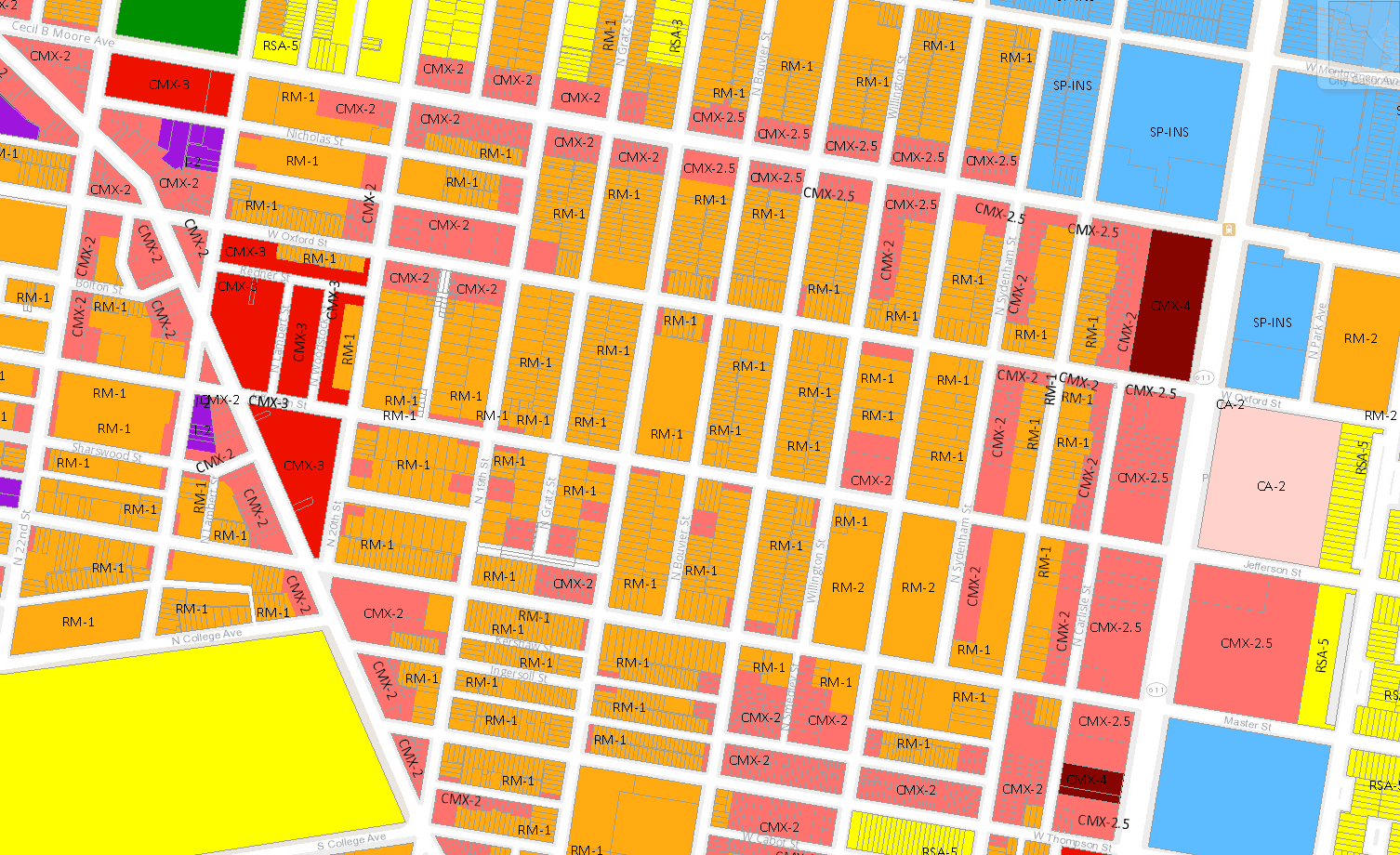Home>diy>Planning & Engineering>How Did Zoning Laws Help To Reduce The Danger From Pollution?


Planning & Engineering
How Did Zoning Laws Help To Reduce The Danger From Pollution?
Modified: January 9, 2024
Learn how zoning laws and planning engineering practices have effectively reduced pollution dangers, improving environmental quality and public safety.
(Many of the links in this article redirect to a specific reviewed product. Your purchase of these products through affiliate links helps to generate commission for Storables.com, at no extra cost. Learn more)
Introduction
Zoning laws are regulations that dictate how land can be used in a given area. They help to control and organize the development of communities, ensuring that different types of land uses are appropriately distributed to maximize efficiency and minimize conflicts. While zoning laws serve various purposes, one significant benefit is their ability to reduce the danger from pollution.
Across the globe, pollution has become a pressing concern, adversely affecting both the environment and public health. From air and water pollution to noise and waste management, addressing these issues has become a top priority. Zoning laws play a vital role in mitigating pollution by providing a framework for sustainable development and ensuring that industrial and hazardous activities are kept at a safe distance from residential areas.
By delineating specific zones for different types of land use, zoning laws create a clear separation between industrial, commercial, residential, and recreational areas. This separation helps to prevent pollution and the associated risks that come with proximity to hazardous materials or activities.
The primary purpose of zoning laws is to protect the health, safety, and welfare of the community. By establishing designated zones, authorities can regulate the location and operation of polluting industries, ensuring that they are situated away from residential areas and sensitive ecological zones. This separation minimizes the exposure of residents to harmful pollutants and reduces the potential for accidents or health hazards.
One of the most significant impacts of zoning laws on pollution is seen in the reduction of air pollution. Zoning regulations often restrict the location of factories, power plants, and other industrial facilities to specific areas away from residential or sensitive zones. These regulations control emissions and help maintain air quality in residential areas, protecting the health of the population.
Zoning laws also play a role in addressing water pollution. By designating appropriate areas for wastewater treatment facilities, preventing the release of contaminants into rivers or streams, and implementing stormwater management plans, zoning regulations help to ensure the protection of water resources.
Furthermore, zoning laws help to minimize noise pollution. By separating industrial and commercial activities from residential areas, noise levels are reduced, enabling residents to enjoy a quieter and more peaceful living environment. This is particularly important in urban areas where noise pollution from busy roads or commercial activities can adversely affect the well-being of residents.
Overall, zoning laws have proven to be effective in reducing the danger from pollution. Numerous case studies showcase the positive outcomes of implementing zoning regulations in different regions around the world. In the following sections, we will explore some of these case studies, highlighting the benefits and challenges of zoning laws in pollution reduction.
Key Takeaways:
- Zoning laws are a powerful tool in reducing pollution by separating industrial activities from residential areas, protecting public health, and preserving natural resources for a healthier, more sustainable environment.
- While zoning laws face challenges such as balancing conflicting interests and ensuring compliance, their benefits in reducing pollution, improving air and water quality, and enhancing community health far outweigh the difficulties.
Read more: What Is A Zoning Law
Understanding Zoning Laws
Zoning laws are a set of regulations and guidelines that govern the use and development of land within a particular jurisdiction. They are implemented by local governments or municipalities to create a systematic framework for land use planning and ensure the orderly growth of communities.
These laws establish different zones or districts, such as residential, commercial, industrial, agricultural, and recreational, each with its own set of permitted uses and restrictions. Zoning maps are created to clearly define the boundaries of each zone and determine the types of activities and structures that are allowed within them.
The purpose of zoning laws is to provide a balance between the competing interests of landowners, promote efficient land use, protect property values, and prevent conflicts between incompatible land uses. By separating incompatible uses, zoning laws help to maintain harmony within a community and protect the health, safety, and welfare of its residents.
There are several types of zoning classifications, including:
- Residential Zoning: This type of zoning is used for areas primarily designated for housing. It can further be subdivided into different categories, such as single-family residential, multifamily residential, or mixed-use residential.
- Commercial Zoning: This zoning is intended for areas where commercial activities, such as retail stores, offices, and restaurants, are permitted. It ensures that commercial establishments are located in appropriate areas with adequate infrastructure and accessibility.
- Industrial Zoning: This type of zoning is designated for areas where industrial activities, such as manufacturing plants, warehouses, and factories, can take place. It aims to prevent conflicts between industrial operations and residential areas.
- Agricultural Zoning: Agricultural zoning is used to protect and promote farming and agricultural activities. It ensures that agricultural land remains preserved and is not converted for non-agricultural uses.
- Recreational Zoning: This zoning is dedicated to areas used for recreational purposes, such as parks, playgrounds, and sports facilities. It helps to provide adequate recreational spaces for residents.
It’s important to note that zoning laws can vary between different jurisdictions, depending on local needs and priorities. Local governments have the authority to create and amend zoning regulations, usually through a public planning process that involves community input and expert advice.
Understanding the principles and intricacies of zoning laws is crucial for developers, property owners, and residents. It helps ensure compliance with regulations and promotes responsible land use practices. Additionally, zoning laws play a critical role in addressing environmental concerns, especially in reducing the danger from pollution, as we will explore further in the subsequent sections.
The Purpose of Zoning Laws
Zoning laws serve several purposes when it comes to land use planning. Their primary goal is to promote the health, safety, and welfare of the community by establishing a framework for organized and sustainable development. By guiding the allocation of land for different uses, zoning laws help create harmonious and functional communities.
One of the main purposes of zoning laws is to prevent conflicts and promote compatibility between different land uses. By separating incompatible uses, such as industrial activities and residential areas, zoning laws reduce the potential for conflicts that may arise from noise, pollution, traffic congestion, or safety concerns. This separation benefits both the industries and the residents, ensuring a better quality of life for all.
Furthermore, zoning laws help preserve property values and protect investments. By establishing zones for specific uses, property owners have a certain level of assurance that nearby land uses will be compatible and beneficial. This stability can contribute to maintaining property values and ensuring the long-term viability of investments in a particular area.
Zoning laws also play a crucial role in promoting public health and safety. By ensuring that hazardous or polluting activities are situated away from residential areas, zoning laws reduce the exposure of residents to harmful pollutants, toxins, and potential accidents. This protection of public health is crucial in fostering a safe and healthy living environment.
Another purpose of zoning laws is to promote efficient land use and infrastructure planning. By designating areas for specific uses, such as commercial centers, residential neighborhoods, and industrial zones, zoning laws facilitate the efficient provision of infrastructure and services. This includes transportation networks, utilities, schools, parks, and other essential facilities and amenities required to support a thriving community.
Zoning laws also help to protect and preserve natural resources and the environment. By designating areas for conservation or environmentally sensitive uses, zoning regulations can safeguard natural habitats, green spaces, and water resources. This promotes ecological sustainability and enhances the overall quality of the environment for both present and future generations.
In summary, zoning laws serve multiple purposes, including preventing conflicts between incompatible land uses, preserving property values, promoting public health and safety, facilitating efficient land use, and protecting the environment. By achieving these objectives, zoning laws contribute to the overall well-being and sustainable development of communities, while also playing a significant role in reducing the danger from pollution.
The Impact of Zoning Laws on Pollution
Zoning laws have a significant impact on pollution by regulating the location and operation of potentially polluting activities. By designating specific areas for industrial, commercial, and residential uses, zoning laws help to minimize the danger from pollution and protect both the environment and public health.
One of the key impacts of zoning laws on pollution is the reduction of air pollution. By establishing industrial zones away from residential areas, zoning regulations ensure that industries with significant emissions are located in designated areas with appropriate control measures. This separation helps to prevent the release of pollutants into the air in densely populated areas, protecting the respiratory health of residents and improving overall air quality.
Zoning laws also contribute to the reduction of water pollution. By regulating the location and operation of wastewater treatment facilities, zoning regulations help ensure that proper treatment and disposal methods are implemented. This prevents the release of pollutants into water bodies, maintaining the ecological balance and safeguarding water resources for both human and aquatic life.
By separating conflicting land uses, zoning laws help control noise pollution. Commercial or industrial activities that generate high levels of noise are generally required to be located away from residential areas. This separation ensures that residents can enjoy a peaceful living environment, devoid of excessive noise levels that can negatively impact their well-being and quality of life.
Furthermore, zoning laws contribute to the reduction of light pollution. By establishing regulations on outdoor lighting, especially in residential areas, zoning regulations help to minimize light spillage and excessive artificial lighting. This not only preserves the natural beauty of the night sky but also has ecological benefits, such as the protection of nocturnal wildlife and the promotion of energy efficiency.
Moreover, zoning laws mitigate the risk of soil contamination by regulating the location of potentially polluting industries and activities. By preventing the establishment of hazardous waste sites or industrial facilities in close proximity to residential areas or environmentally sensitive zones, zoning regulations reduce the potential for soil contamination and its harmful effects on human health and ecosystems.
Overall, zoning laws have a profound impact on pollution reduction. By effectively managing land use and guiding the location of industries, commercial activities, and residential areas, zoning regulations help to create a more sustainable and environmentally-friendly built environment. By minimizing the danger from pollution, these laws contribute to the overall well-being of communities and the preservation of natural resources.
Zoning laws help reduce pollution by designating specific areas for industrial activities, preventing them from encroaching on residential areas. This helps limit exposure to harmful pollutants and promotes a healthier environment for communities.
Case Studies of Zoning Laws and Pollution Reduction
Several case studies from around the world have demonstrated the effectiveness of zoning laws in reducing pollution and improving environmental conditions. These examples highlight the positive outcomes that can be achieved through the implementation of well-designed zoning regulations.
One notable case study is Curitiba, Brazil. The city is recognized for its innovative urban planning, which includes comprehensive zoning regulations aimed at reducing pollution and promoting sustainable development. Through zoning laws, Curitiba has successfully separated industrial zones from residential areas, minimizing the exposure of residents to harmful pollutants. This has significantly improved air quality and helped create a healthier living environment for the city’s population.
In the United States, the city of Portland, Oregon, is often cited as a successful case study in pollution reduction through zoning laws. Portland has implemented a comprehensive land use planning system that emphasizes mixed-use development, transit-oriented design, and the protection of natural resources. By promoting higher density development in designated urban growth areas and encouraging walkability and public transportation, Portland has been able to reduce congestion, improve air quality, and decrease reliance on private vehicles, leading to a significant reduction in pollution levels.
In China, the city of Shenzhen provides an inspiring example of how zoning laws can contribute to pollution reduction. Facing severe air pollution challenges, Shenzhen implemented strict zoning regulations that effectively separated industrial areas from residential zones. Additionally, the city has incentivized the use of clean technologies and renewable energy sources in industrial operations. These measures have resulted in a notable decrease in air pollution levels and a substantial improvement in air quality for the residents of Shenzhen.
Another case study worth mentioning is Tokyo, Japan. The city’s zoning laws have been instrumental in controlling noise pollution. Tokyo designated quiet zones, such as residential areas and schools, where specific noise limits are enforced. Through strict enforcement and noise reduction measures, Tokyo has significantly reduced noise levels in these sensitive areas, creating a more peaceful and livable environment for its residents.
These case studies demonstrate the effectiveness of zoning laws in reducing pollution and improving environmental conditions. By implementing well thought-out zoning regulations, cities and communities can successfully address the challenges of pollution while promoting sustainable development and protecting public health.
Read more: How To Find Out Zoning Laws
Benefits and Challenges of Zoning Laws in Reducing Pollution
Zoning laws play a critical role in reducing pollution and creating healthier, more sustainable communities. While these laws offer numerous benefits, they also come with their own set of challenges. Understanding both the benefits and challenges is essential for effective implementation and continuous improvement of zoning regulations in pollution reduction efforts.
Benefits:
- Pollution Prevention: Zoning laws effectively separate polluting industrial activities from residential areas, minimizing exposure to harmful pollutants and protecting public health.
- Air Quality Improvement: By controlling the location and emissions of industries, zoning laws contribute to improved air quality, reducing the risk of respiratory problems and related health issues.
- Water Resource Protection: Zoning regulations help prevent water pollution by specifying appropriate locations for wastewater treatment facilities and enforcing stormwater management practices.
- Preservation of Natural Resources: Zoning laws designate areas for conservation, protecting natural habitats, green spaces, and ecologically sensitive areas, thereby preserving biodiversity and promoting environmental sustainability.
- Strengthened Community Health: By reducing pollution risks, zoning laws support a healthy living environment, enhancing the quality of life for residents and fostering stronger, more resilient communities.
- Enhanced Property Values and Investments: Zoning laws create certainty for property owners by ensuring compatible and beneficial land uses, thereby protecting property values and attracting investment.
Challenges:
- Balancing Conflicting Interests: Zoning laws must strike a balance between the needs of different stakeholders, such as developers, residents, and businesses. Balancing these interests can often be a complex and challenging process.
- Enforcement and Compliance: Ensuring compliance with zoning regulations can be a challenge, as it requires effective enforcement mechanisms and continuous monitoring to prevent violations. A lack of resources or inadequate enforcement can undermine the effectiveness of zoning laws.
- Adaptability to Changing Needs: Zoning laws must be adaptable to changing societal, economic, and environmental needs. As communities evolve, zoning regulations need to be periodically reviewed and updated to address new challenges and opportunities.
- Political and Stakeholder Resistance: The implementation of zoning laws can face opposition from various parties, including developers, interest groups, and residents. Balancing competing interests and ensuring broad stakeholder participation is crucial for successful implementation.
- Unintended Consequences: Zoning laws may have unintended consequences, such as potential displacement of vulnerable communities or concentration of pollution in specific areas. It is important to consider potential unintended consequences and take proactive measures to mitigate them.
- Complexity and Public Awareness: Zoning laws can be complex and technical, making it challenging for the public to understand and engage in the decision-making process. It is essential to promote public awareness and provide opportunities for meaningful public participation.
Despite these challenges, the benefits of zoning laws in reducing pollution far outweigh the difficulties associated with their implementation. By addressing these challenges strategically, through effective governance, stakeholder engagement, and continuous improvement, communities can harness the full potential of zoning laws in creating healthier and more sustainable environments.
Conclusion
Zoning laws are a powerful tool in reducing the danger from pollution and creating healthier, more sustainable communities. By controlling the location and operation of potentially polluting activities, these laws effectively separate incompatible land uses and protect public health and the environment.
Throughout this article, we have explored the various aspects of zoning laws and their impact on pollution reduction. We have seen how zoning regulations help prevent conflicts between different land uses, preserve property values, promote public health and safety, and protect natural resources. Zoning laws have proven to be effective in reducing air pollution, water pollution, noise pollution, and light pollution.
Case studies from around the world have showcased successful examples of pollution reduction through zoning laws. Cities like Curitiba, Portland, Shenzhen, and Tokyo have demonstrated the positive outcomes that can be achieved when well-designed zoning regulations are implemented and enforced.
While zoning laws offer significant benefits, they also come with challenges. Balancing conflicting interests, ensuring compliance and enforcement, adapting to changing needs, and addressing unintended consequences require careful governance and stakeholder engagement. Public awareness and participation are crucial in fostering understanding and support for zoning regulations.
In conclusion, zoning laws are an essential tool for reducing pollution and creating healthier and more sustainable communities. They play a critical role in protecting public health, improving air and water quality, preserving natural resources, and promoting a high quality of life for residents. By addressing the challenges associated with zoning laws and continuously improving their effectiveness, communities can harness their full potential in creating a safer, cleaner, and more sustainable future.
Frequently Asked Questions about How Did Zoning Laws Help To Reduce The Danger From Pollution?
Was this page helpful?
At Storables.com, we guarantee accurate and reliable information. Our content, validated by Expert Board Contributors, is crafted following stringent Editorial Policies. We're committed to providing you with well-researched, expert-backed insights for all your informational needs.















0 thoughts on “How Did Zoning Laws Help To Reduce The Danger From Pollution?”